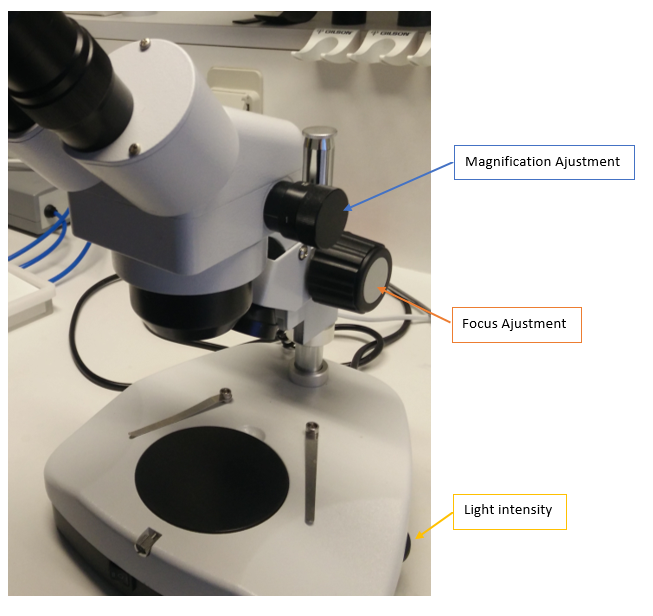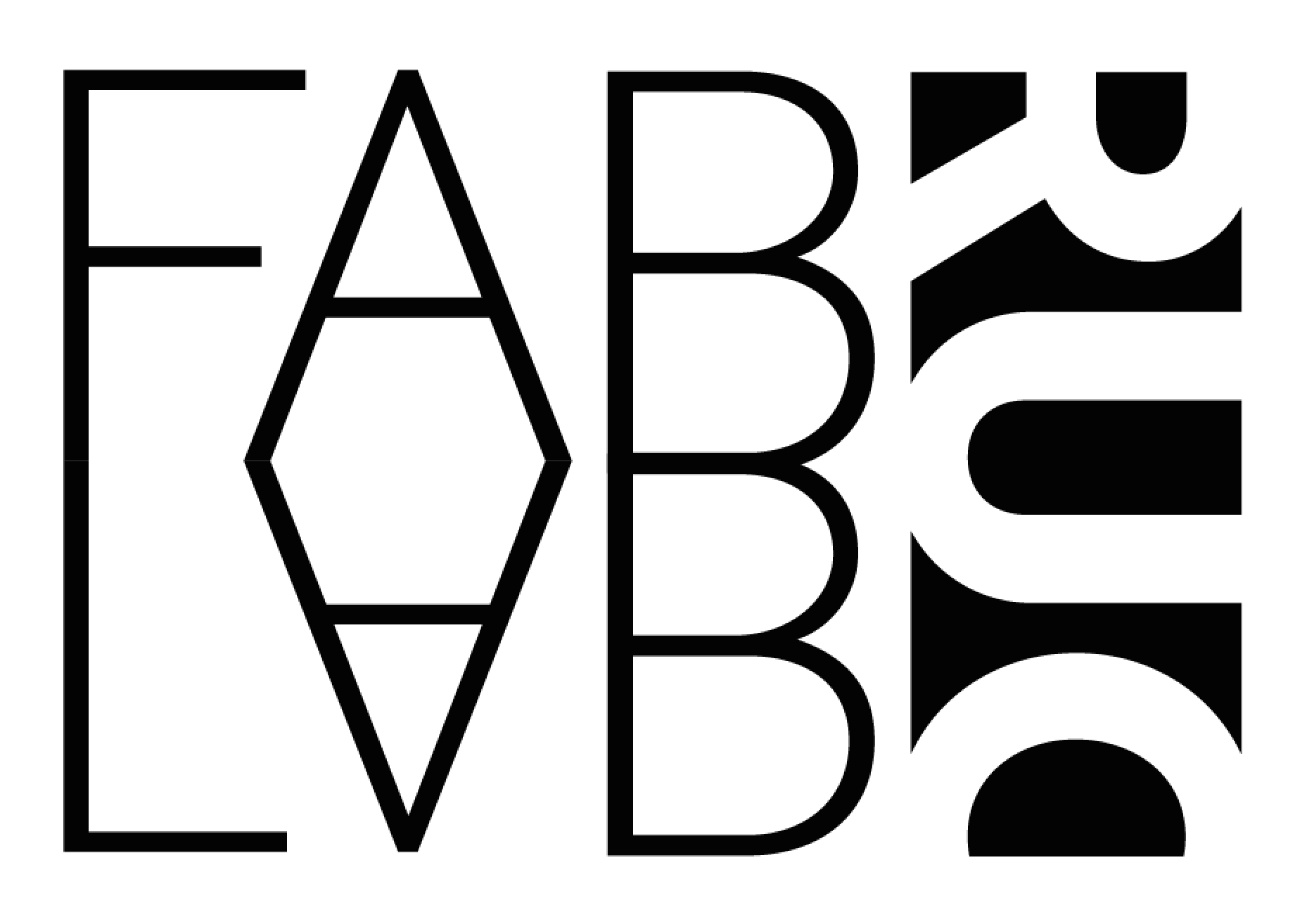Microscope Guide
BioFabLab has four microscopes available for you to use (two Phase-contrast and two stereo microscopes). This guide will briefly introduce you to the main parts of the two types of microscopes, and shortly present the instructions and steps that should be followed when preparing your samples prior to microscope use.
The Phase-Contrast Microscopes
The phase contrast microscopes can magnify from 40x up to 1000x times closer, and is thus used to observe and identify a variety of microorganisms in the lab.
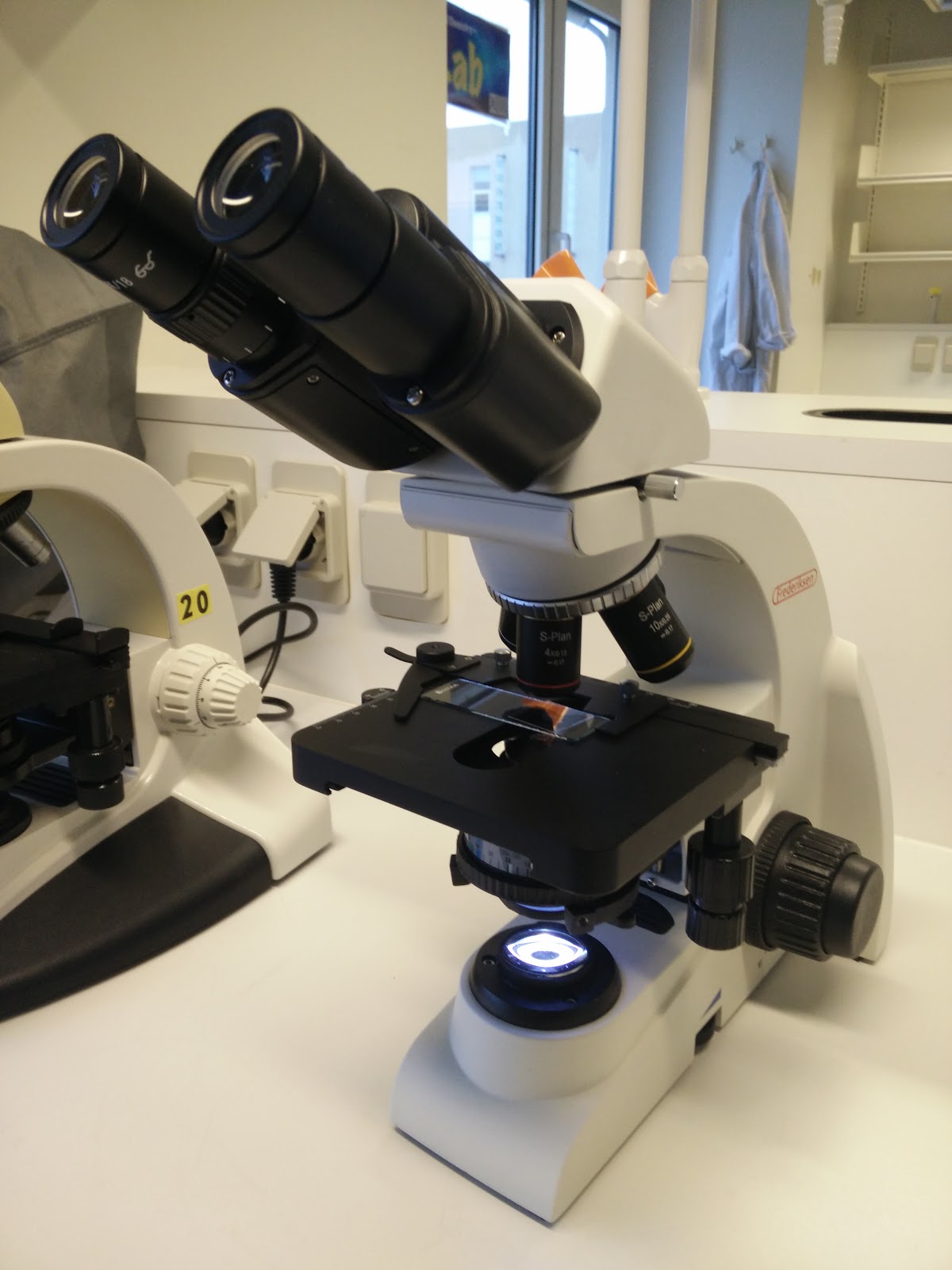
Procedure for Using a Phase-Contrast Microscope:
1) Start off by adding a small drop of sterile water (or media) using a sterile toothpick (or a micropipette) on the microscope slide.
2) Thereafter, place your sample on the drop and then put a glass cover on top of it to press it down.
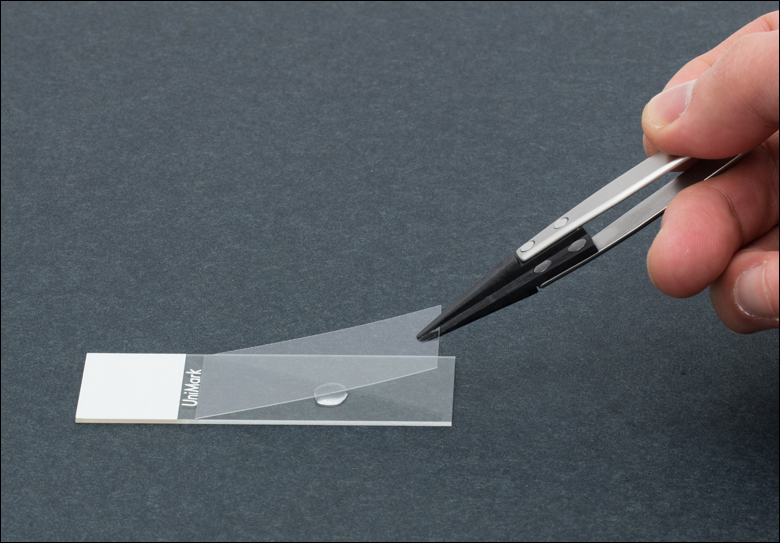
3) Place the microscope slide on the microscope stage and fix the slide using the slider holders.
4) start-off with the 4x objective lens and adjust the position of the slide under the lens using the two adjusting screws that are the mechanical stage controls.

5) Focus the lens by moving the microscope stage up and down using the coarse adjustment knob and fine tune it using the fine adjustment knob.
6) To make the object stand sharp in both the right and left eye lens, start-off by focusing with the right eye only. The left eye lens will automatically be adjusted.
7) Once the focus is found, a lens with a higher magnification capacity (10x - 40x) can be selected. Since the lenses are matched to each other, adjusting the focus of lens can be achieved by only adjusting the fine adjustment knob and the phase adjustment knob. Now the sample can be explored by slowly moving the stage through turning the mechanical stage controls.
For using the 100x lens:
Note that once you decide to use the 100x lens, you cannot shift back to use the 40x, 10x, and 4x lenses using the same glass cover on top of your sample. This is because shifting from a 40x lens to a 100x lens requires that you put a small drop of oil on top of your glass cover above your sample to affect the refraction of light passing through it and to achieve the high magnification capacity of the 100x lens. This is only applied to the 100x lens and not the others, so avoid shifting up to the 100x lens if you are considering to go back to the 40x lens.
The 100x lens is mainly used to observe and classify small micro-organism such as bacteria, based on their structural features. (see figure below)
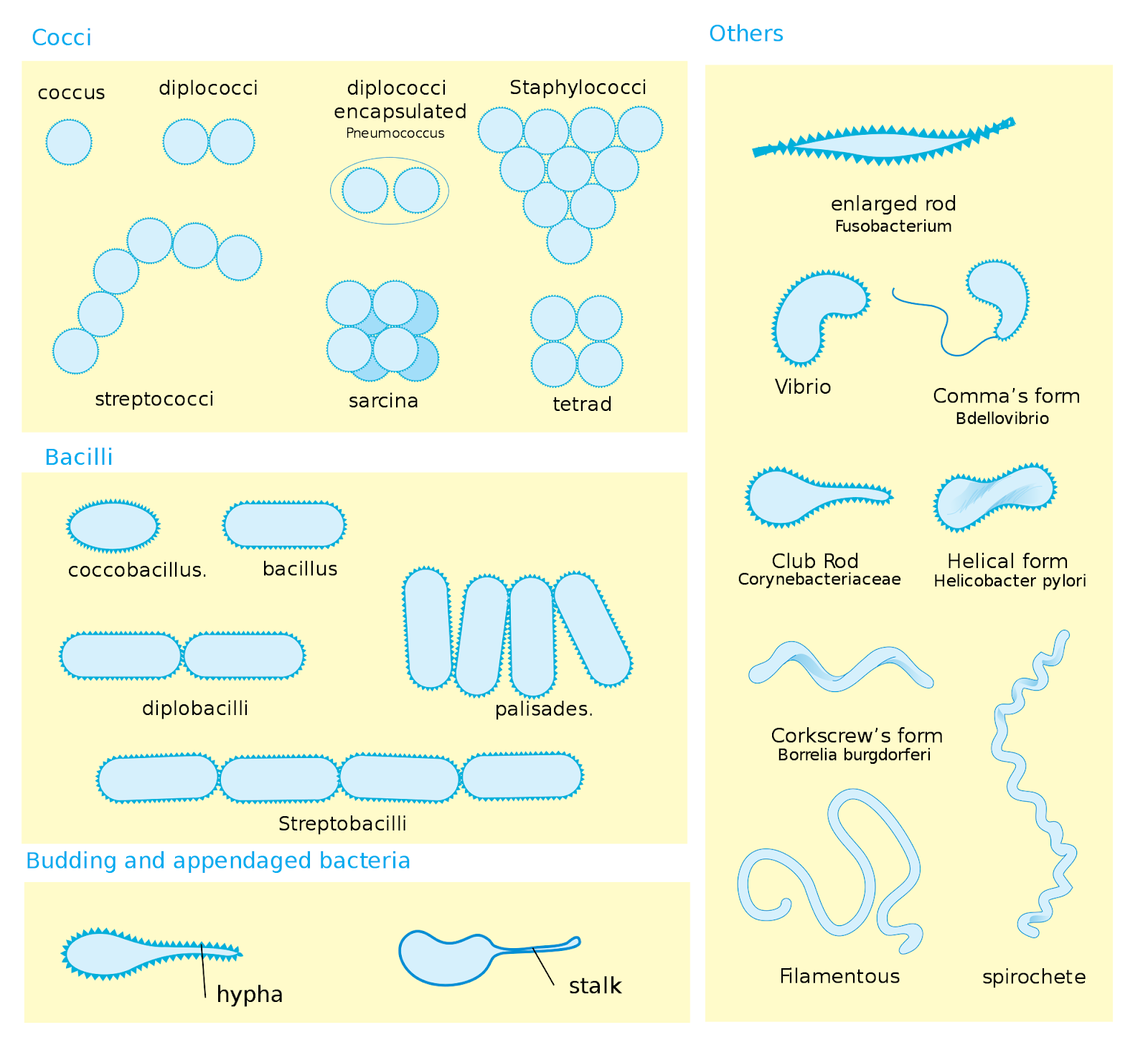
The Stereo Microscopes
The Stereo microscopes are designed for low magnification observation of a sample, typically using light reflected from the surface of an object rather than transmitted through it and it can maximum magnify up to 40 times closer. It is quiet easy to adjust and work with the stereo microscopes. In the Biofablab, we mainly use them to obtain a closer image (observation) when experimenting and working with Fruit flies (drosophila).
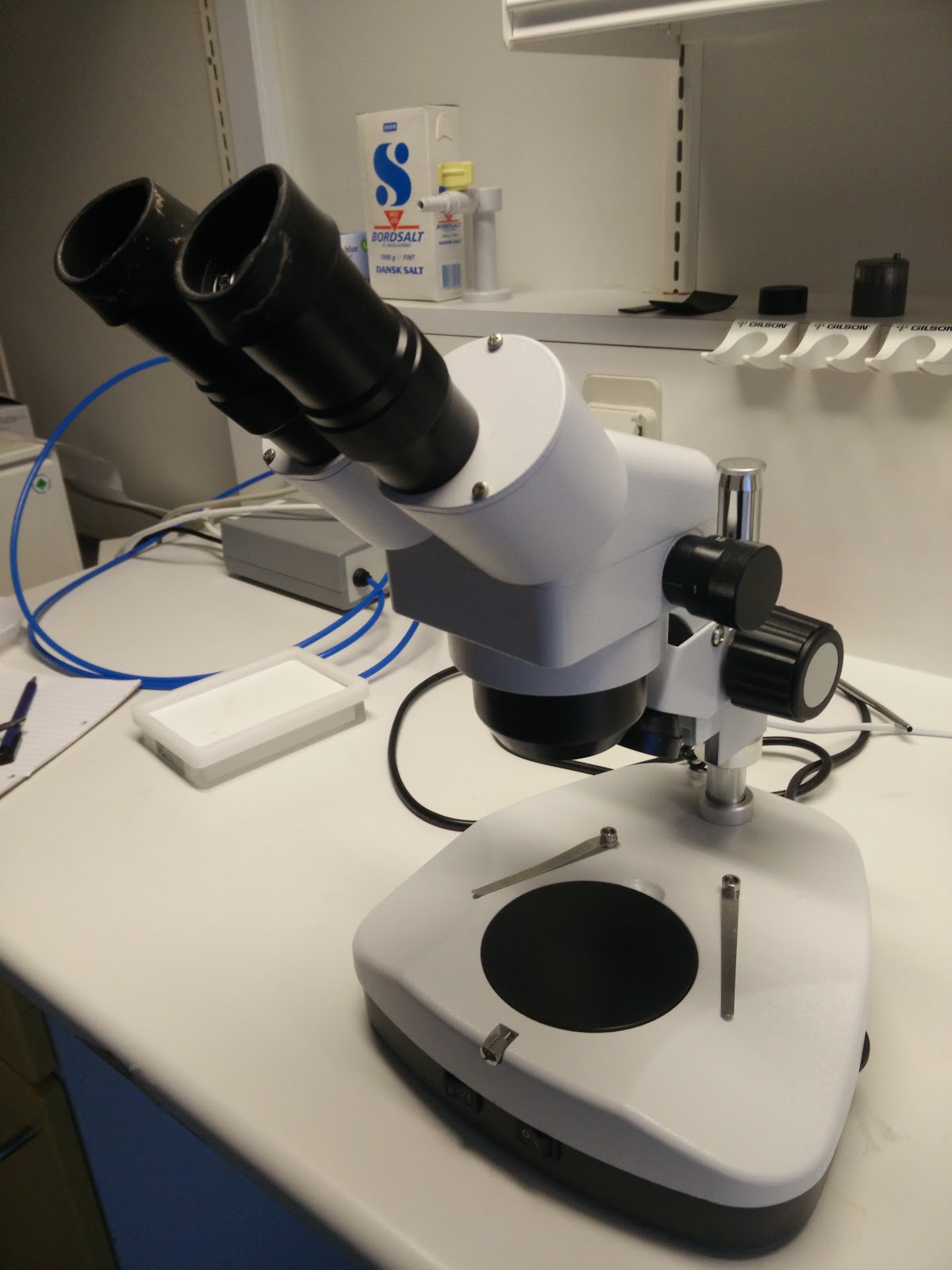
Procedure for Using a Stereo Microscope:
1) Start-off by turning on the microscope and adjusting the magnification to its lowest using the magnification adjustment knob located on both sides of the microscope (see picture below).
2) Place the object to be magnified under the lens and find focus using the focus adjustment knob found on both sides of the microscope (see picture below). Once the focus is found, magnification can be increased while focusing simultaneously.
